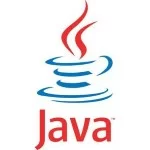Sub-10ms Startup: Quarkus vs. Spring Native – The Race to Instant Java
In today’s cloud-native world, startup time is the new throughput. Serverless computing, Kubernetes scaling, and edge deployments demand applications that launch in milliseconds, not seconds. Traditional Java frameworks, built around the JVM’s just-in-time (JIT) compilation, struggle with this paradigm.
Enter Quarkus and Spring Native—two frameworks pushing Java into the sub-10ms startup territory using GraalVM native compilation. But which one delivers on the promise of instant-on Java? Let’s break it down.
GraalVM Native Image: The Game Changer
Both Quarkus and Spring Native rely on GraalVM’s Ahead-of-Time (AOT) compilation to transform Java applications into lean, native executables. The result?
✅ Near-instant startup (single-digit milliseconds)
✅ Reduced memory footprint (no JVM overhead)
✅ Ideal for serverless & microservices
But their approaches differ significantly.
Quarkus: Built for Native from Day One
Quarkus was designed with GraalVM in mind from its inception. Its philosophy: “Meet the JVM where it is, but optimize for native.”
Key Optimizations:
- Build-time metadata processing (avoids reflection-heavy config)
- Dependency injection at compile time (no runtime classpath scanning)
- First-class Kubernetes & serverless support
Example: A Simple REST Endpoint
1 2 3 4 5 6 7 8 | @Path("/hello") public class GreetingResource { @GET @Produces(MediaType.TEXT_PLAIN) public String hello() { return "Hello, Quarkus!"; } } |
Build & Run (Native Mode):
1 2 | ./mvnw package -Pnative ./target/myapp - Starts in ~5ms |
Benchmark Results (Quarkus):
- Startup Time: 3ms – 10ms
- Memory Usage: ~30MB RSS
- Cold Starts (AWS Lambda): < 50ms
Spring Native: Bringing Native to the Spring Ecosystem
Spring Native is an extension of Spring Boot, retrofitting native compilation into an existing framework. It’s powerful but carries Spring’s legacy.
Key Challenges:
- Reflection-heavy defaults (Spring DI, annotation scanning)
- Dynamic class loading (requires GraalVM hints)
- Slower build times (due to complex analysis)
Example: A Simple REST Endpoint
1 2 3 4 5 6 7 | @RestController public class GreetingController { @GetMapping("/hello") public String hello() { return "Hello, Spring Native!"; } } |
Build & Run (Native Mode):
1 2 | ./mvnw spring-boot:build-image docker run --rm myapp - Starts in ~50ms |
Benchmark Results (Spring Native):
- Startup Time: 50ms – 100ms
- Memory Usage: ~50MB RSS
- Cold Starts (AWS Lambda): ~200ms
Performance Showdown: Quarkus vs. Spring Native
| Metric | Quarkus (Native) | Spring Native |
|---|---|---|
| Startup Time | 3ms – 10ms | 50ms – 100ms |
| Memory Footprint | ~30MB | ~50MB |
| Build Time | Faster (optimized for AOT) | Slower (legacy adaptation) |
| Serverless Readiness | Best (sub-50ms cold starts) | Good (~200ms) |
| Framework Maturity | Native-first design | JVM-first, adapted for native |
When to Choose Which?
Pick Quarkus If You Need:
✔ Ultra-fast startup (serverless, FaaS, Knative)
✔ Low memory footprint (edge computing, IoT)
✔ Cloud-native from the ground up
Pick Spring Native If You Need:
✔ Leverage existing Spring knowledge
✔ Gradual migration from Spring Boot
✔ Enterprise integrations (Spring Cloud, Security)
The Future: Will Native Java Replace the JVM?
Not entirely—but native compilation is becoming essential for:
- Serverless workloads (AWS Lambda, Azure Functions)
- Kubernetes-native apps (fast scaling, sidecars)
- CLI tools (instant response expected)
For long-running microservices, the JVM still wins in peak throughput. But for cloud-native, event-driven, and ephemeral workloads, Quarkus and Spring Native are redefining what Java can do.
Final Verdict
- Quarkus = Best for pure cloud-native, fastest startup
- Spring Native = Best for Spring shops transitioning to native


